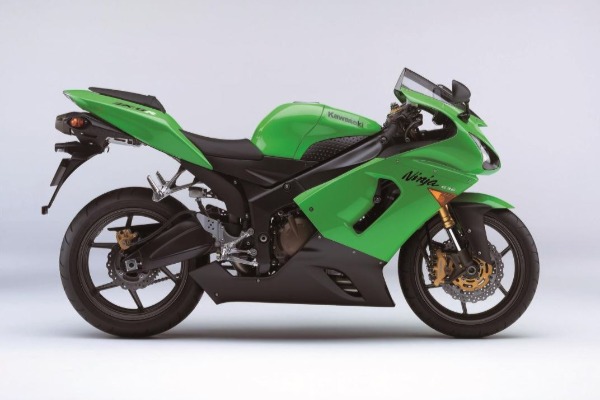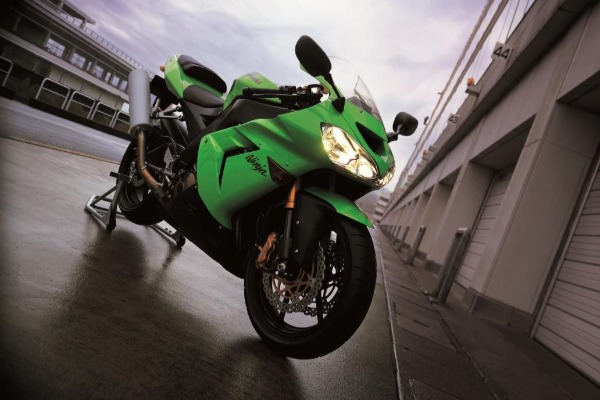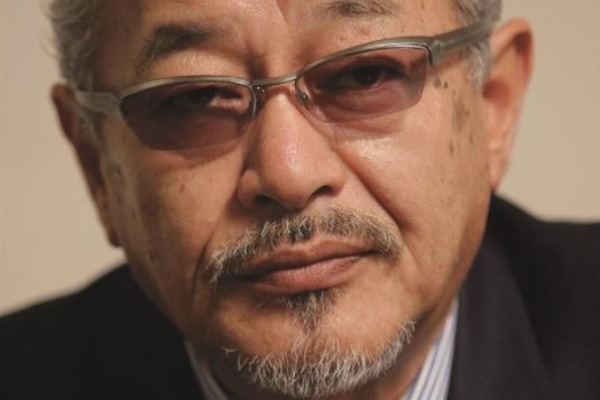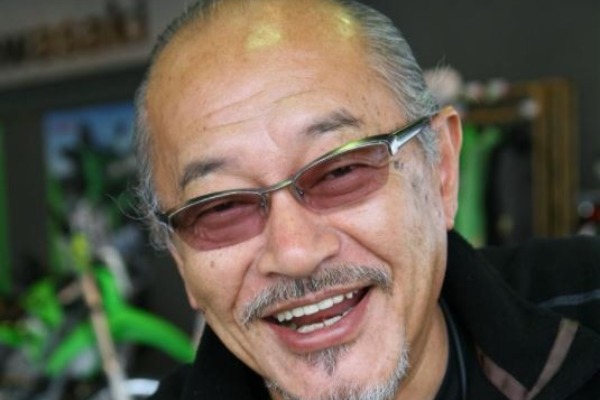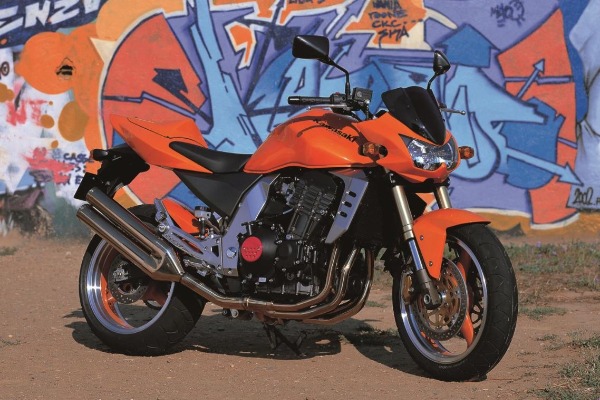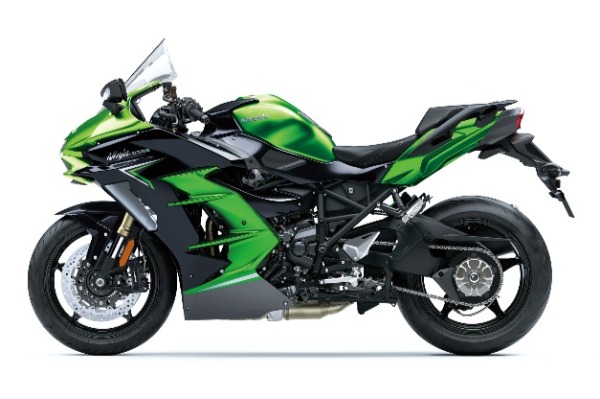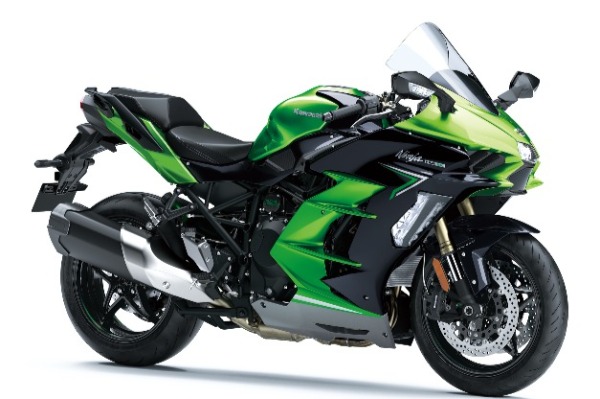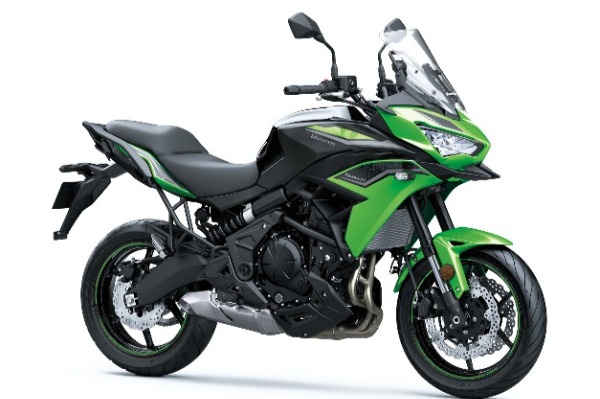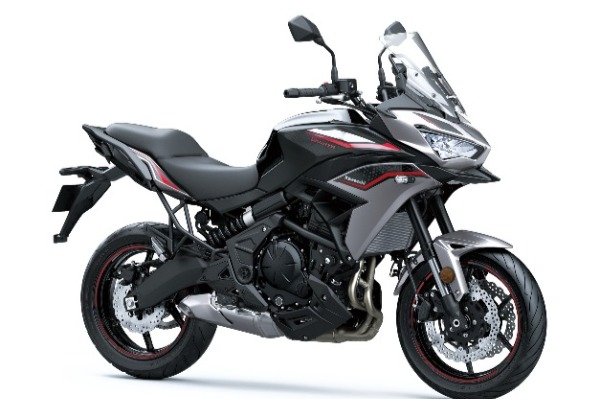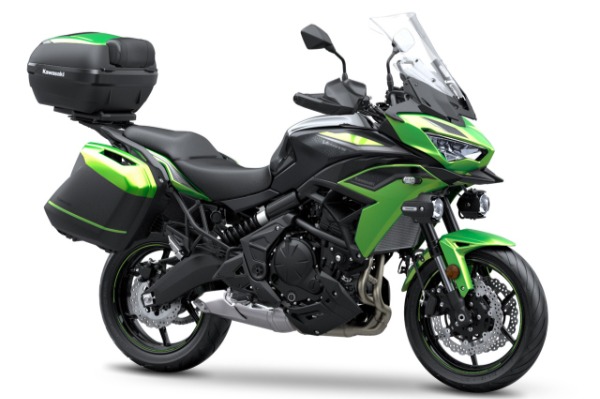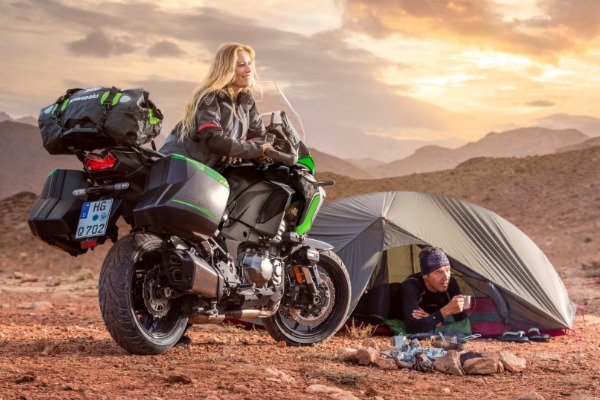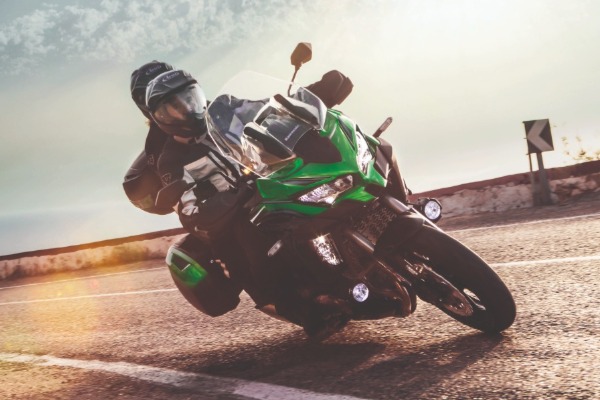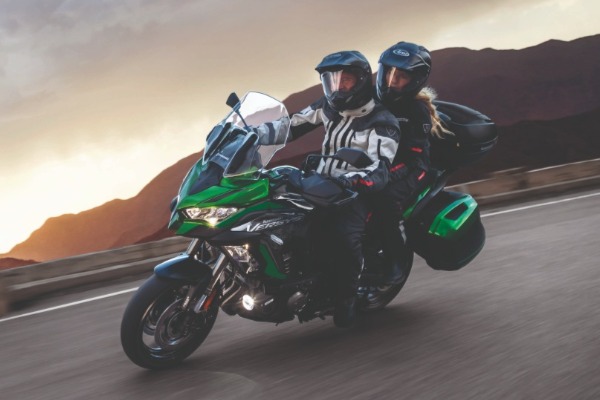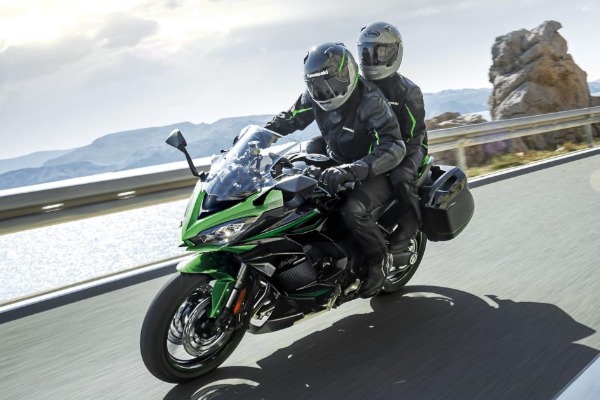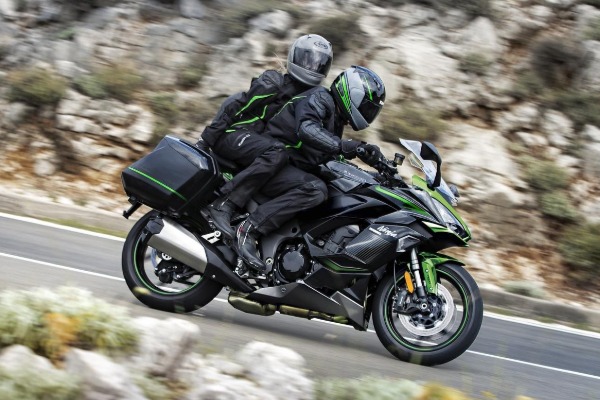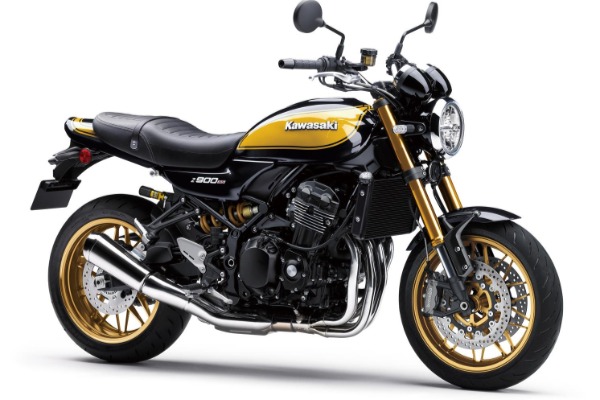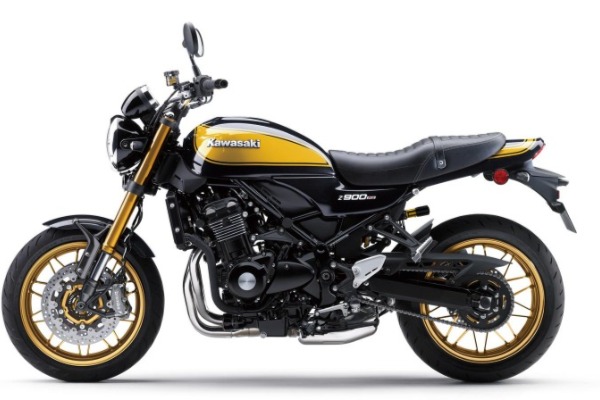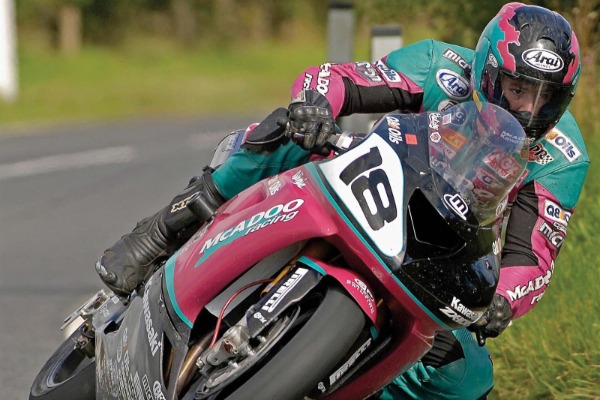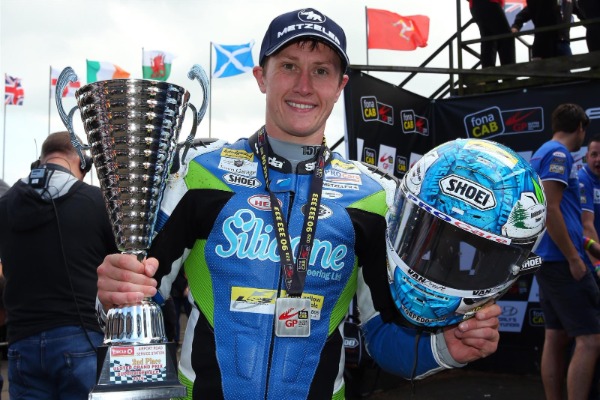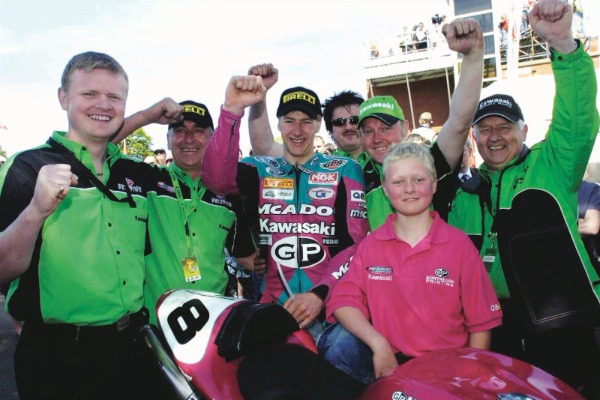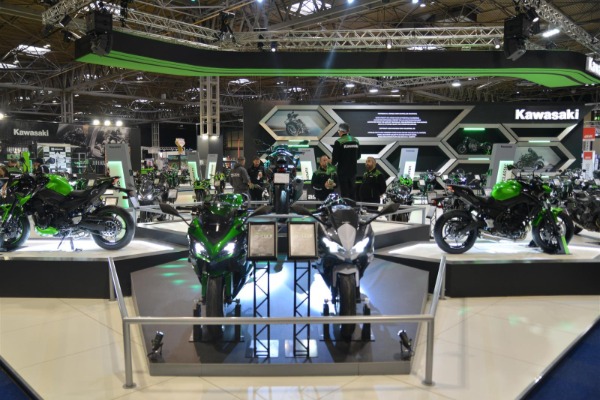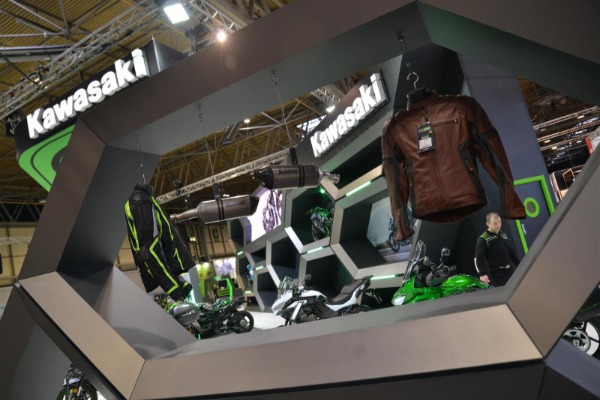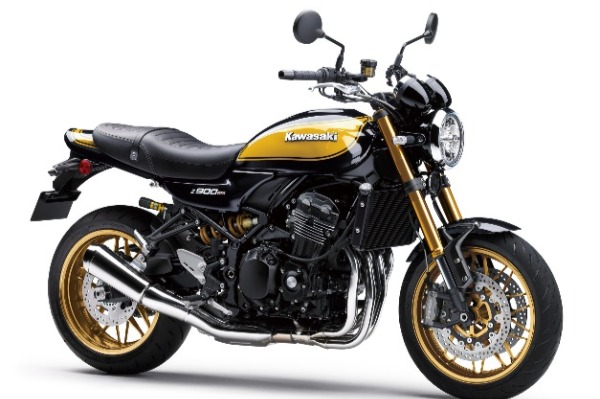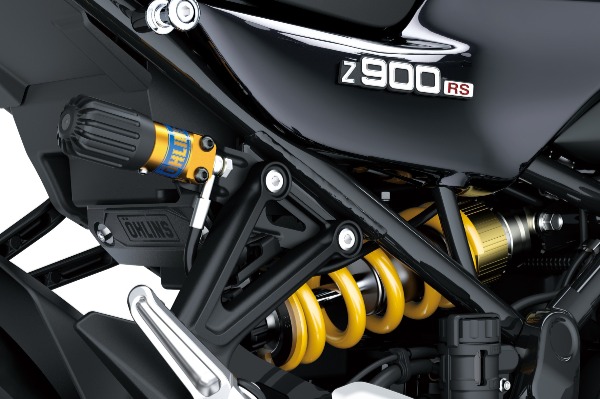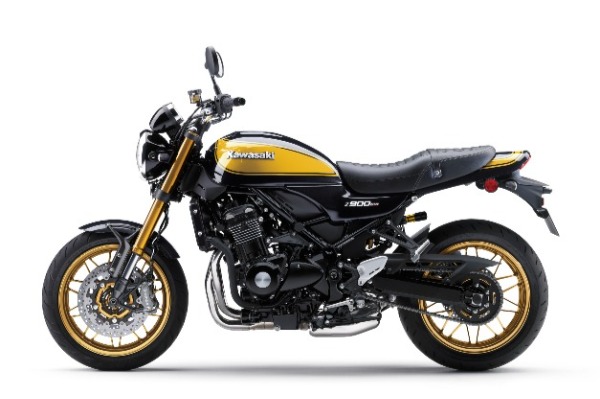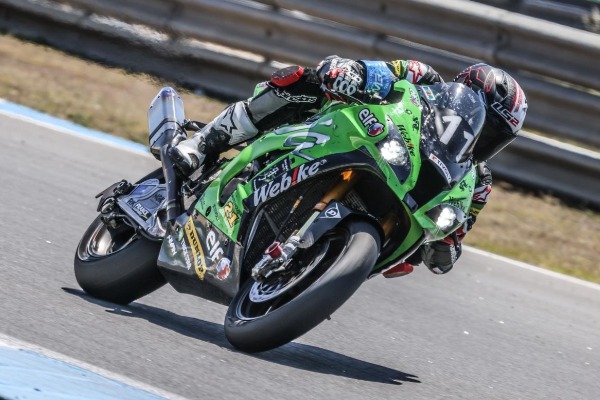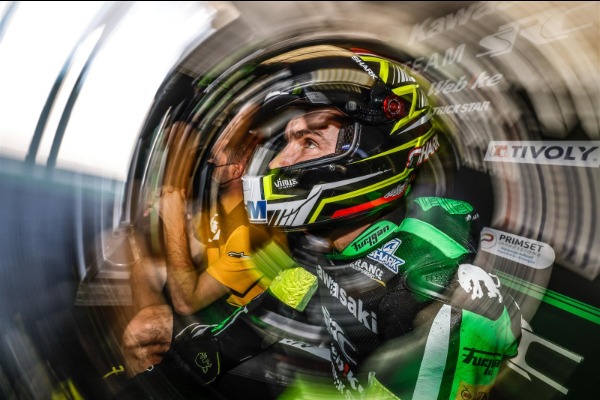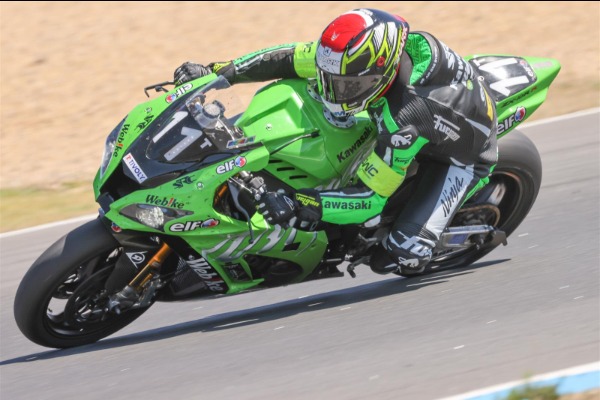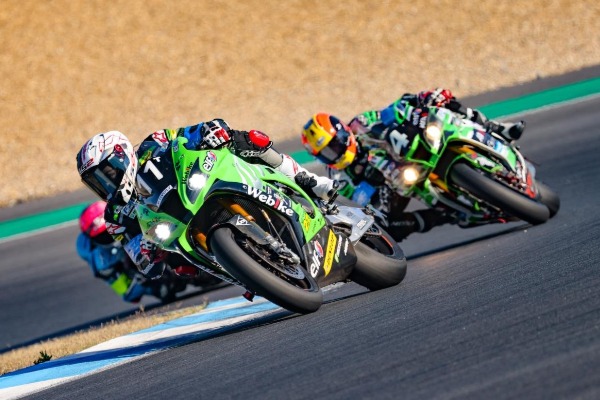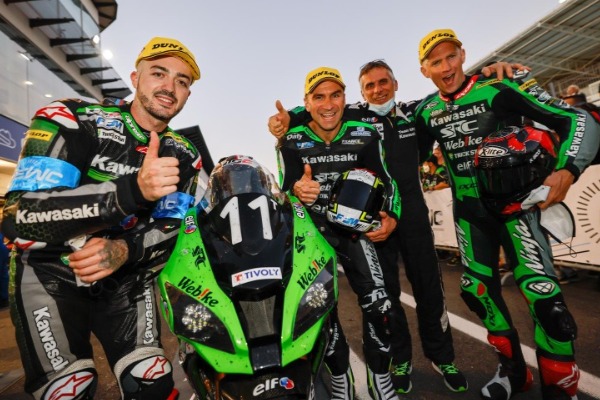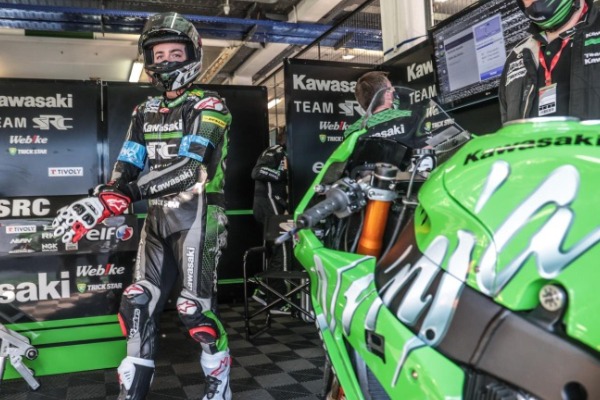One of the most influential motorcycle designers of recent times has sadly died at his home in Japan at the age of 75. In December 2021, Shunji Tanaka passed away and leaves a considerable legacy in terms of his influence on motorcycle design while Design Director for Kawasaki based at their factory in Akashi, near Kobe, Japan.
As an integral part of Kawasaki’s K-Tec design department, Tanaka-san played a significant part in the introduction of a fresh, new approach to the styling of Kawasaki motorcycles both in terms of the bodywork and overall appearance plus the adoption of so called “signature colours” which defined the machines during their launch phase.
Already a highly respected automotive designer before joining Kawasaki, Tanaka-san is credited with the design direction of the Mazda MX5, the world’s top selling two seat convertible ever in terms of volume of sales with production now exceeding one million units. Moving from four to two wheels did not intimidate Tanaka-san; in fact, the remit to create bold designs for Kawasaki which embodied the uncompromising performance personality of the company resulted in a series of machines with instant impact and lasting appeal.
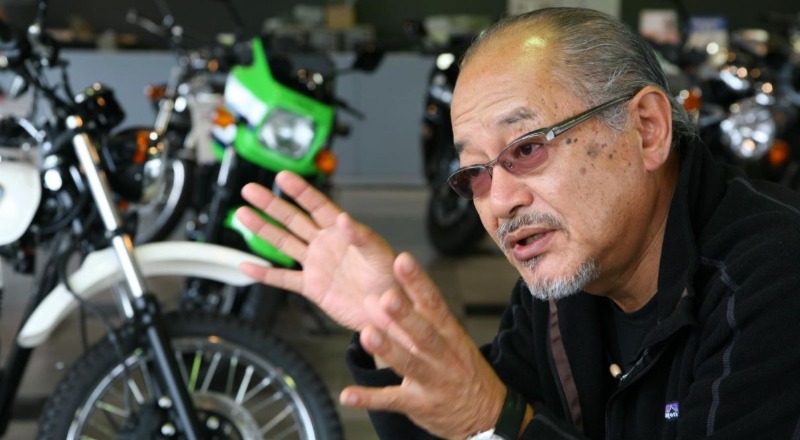
Marshalling his design team into a mutually supportive group – one of the keys to Tanaka-san’s success – was the democratisation of the design process with even the most junior team member having a voice and being able to contribute to the final finished product.
Applauded for his influence on the styling and visual appeal of the machines launched during his time as K-Tec design director, Tanaka-san was proud to be involved in the successful introduction of the water-cooled in-line four-cylinder Z1000 in 2003 with its distinctive quad exhaust system and angular lines and for overseeing the look of the dramatic and impressive 2004 Ninja ZX-10R and subsequent 2005 Ninja ZX-6R.
Creating a recognisable “face” for the machines his team were responsible for was no coincidence as Takana-san firmly believed that the “personality” of a motorcycle was determined by the upper cowl and headlamp area with the rest of the design flowing from, and influenced by, this crucial part of the styling exercise.
It is hardly surprising that among many and varied enthusiasms in his private life, that Shunji Tanaka had a passion for the “Noh” masks used in traditional Japanese theatre productions; each mask establishing the credentials and often complex personality of the character in the play.
Mercurial, thoughtful, and highly creative, Tanaka-san was an eminently approachable man whose evident enthusiasm for design was infectious. As a “landmark” along the considerable design journey that Kawasaki has taken – and continues to this day – Shunji Tanaka will be remembered with considerable respect and affection.
Kawasaki will launch the most comprehensively specified Sport Tourer ever created in 2022 and, thanks to new innovative ARAS technology from technical partner Bosch, this new machine will be on the radar of a legion of motorcycle fans.
Equipped with not one but two radar sensors, the Ninja H2 SX – and the top of line SE model with Showa electronically damped suspension plus Skyhook technology – host multiple rider aids including Forward Collision Warning (FCW), Adaptive Cruise Control (ACC) and Blind Spot Detection (BSD).
With three possible rider selectable distance settings, FCW gives a visual warning via a strip of lights above the meter panel when the machine reaches a set distance from the vehicle in front. The rider is in control at all times of the response and can brake or take other actions to avoid a possible collision. ACC – adaptive cruise control – also has three possible distance settings. In this case, when the machine reaches a set proximity, the brakes are automatically activated if necessary to aid deceleration, and the engine speed slowed sufficiently to maintain the pre-selected distance. As the distance increases, the machine gradually and automatically returns to the set cruising speed the rider initially selected. While both of these functions are focused on the front radar sensor, the rear sensor is dedicated to BSD – blind spot detection. As it suggests, as a vehicle moves into a rider’s blind spot a light (either left or right) illuminates clearly but unobtrusively in the relevant rear-view mirror.
As a platform for such advanced technology, there is no better machine than the Ninja H2 SX with its unique Kawasaki designed and manufactured balanced supercharged engine. Mated to the sharp aggressive Ninja styling and advanced suspension, the sporting prowess of this ultimate tourer is indeed impressive. A cornering management function, multi-level traction control, launch control plus engine brake control, integrated riding modes, and even an up/down quick shifter as standard, show that this is a sport bike of the highest order.
Matched to this are such touring features as optional colour-coded clean mount panniers, selectable riding and power modes, keyless ignition, LED cornering lights plus on-board tyre pressure monitoring. Additionally – and making life that little easier when on tour – vehicle hold assist (VHA) is also part of the standard specification. When the rider has stopped, VHA is initiated after the rider exerts a given amount of pressure (to either the front and/or rear brake). The system disengages automatically when rider pulls away or when the side stand goes down. This is a huge advantage when pulling away uphill or with passenger and luggage onboard. Handy too is the Emergency Stop Signal, another automatic feature that “pulses” the rear brake light if the rider suddenly brakes hard.
In terms of the “rider environment”, Kawasaki has certainly not economized delivering a large, colour TFT meter panel able to relay a multitude of machine status updates; but that is just the start of the 6.5” screen’s functionality. For 2022, the Ninja H2 SX and SE models come with Kawasaki SPIN as standard. A “screen in screen” infotainment system, SPIN allows the rider to link to their Smartphone and access approximately 20 Apps on the meter panel covering navigation, weather, music, contact logs and many other subjects such as rider to passenger communication.
Packing so much technology and smart features into one sports touring package has been a challenge that Kawasaki’s designers and technicians have been proud to rise to. Put simply, the Ninja H2 SX is likely to be beyond the expectations of many and it will take time for the motorcycling world to fully come to terms with the sheer level of sports and touring ability on offer, along with the most comprehensive array of rider aids that Kawasaki has ever made available. 2
022 Colours – Ninja H2 SX and SE
Emerald Blazed Green / Metallic Diablo Black / Metallic Graphite Grey
Available from March 2022, the Ninja H2 SX and Ninja H2 SX SE will be available in three editions:
Ninja H2 SX – £20,949Ninja H2 SX Tourer Edition – £21,699
Ninja H2 SX Performance Edition – £22,049
Ninja H2 SX Performance Tourer Edition – £22,799Ninja H2 SX SE – £23,949
Ninja H2 SX Tourer Edition – £24,699Ninja H2 SX Performance Edition – £25,049
Ninja H2 SX Performance Tourer Edition – £25,799
The President of the newly formed Kawasaki Motors, Ltd. – Mr Hiroshi Ito – visited the 2021 EICMA show in Milan to unveil a number of key models for the 2022 season while displaying corporate confidence in terms of international travel, alternative power sources and the roll out of new season products.
Hosting unveilings on both the Kawasaki booth and the adjacent Bimota display area, Mr Ito struck a confident note while taking part in the public world debut of two significant Kawasaki machines whilst also praising the commitment and achievements of global Kawasaki racing endeavours. Underpinning this, he made a number of key commitments in his keynote speech.
Front of mind for the media and many consumers are the twin issues of future fuels and carbon neutrality while pursuing all options including HEV, EV and eFuels such as hydrogen. Reflecting on the current trend for electric vehicles Mr Ito promised that the newly formed Kawasaki Motors, Ltd. would unveil three electric models globally during 2022. Additionally, he committed to further development of hybrid vehicles and offered some tempting insights into Kawasaki’s advances in the field of hydrogen power stating that the Kawasaki Group as a whole is taking on a key role in this area committing to lead the way in hydrogen production, transport, storage and use.
With some 2022 machines already in the public the Kawasaki EICMA booth played host to the international debut of several major models for the coming season. In terms of sales volume the mid-capacity sector, and the vital A2 licence class, the Versys 650 is one of the jewels in the Kawasaki crown. For 2022 the appeal of this already popular machine is boosted following a number of key changes. In terms of bodywork styling, the synergy between the Versys 650 and Versys 1000 is now complete thanks to changes to the upper cowl of the smaller machine.
And with so many Versys customers riding year-round the new screen with its greater weather protection and revised adjustment procedure is augmented by an even larger genuine accessory item. KTRC traction control is a welcome addition for 2022 with two rider selectable settings while the 4.3” full-colour TFT instrumentation provides at-a-glance information and smartphone connectivity contributing to an even richer riding experience.
With all LED lighting and a range of practical genuine accessories such as handguards and a useful optional USB socket mounted in the cockpit area, the Versys 650 will form an essential part of the 2022 model range for Kawasaki – especially so in Europe where the edition models covering Urban, Tourer, Tourer Plus and Grand Tourer specifications will be shortly available on showroom floors.
Taking the pioneering and innovative spirit of the new Kawasaki Motors, Ltd. as his reference point, Mr Ito also proudly unveiled a game changing motorcycle that the company confidently positions as the most advanced Sports Tourer ever created. The 2022 Ninja H2 SX is equipped with Bosch ARAS technology and boasts not one, but two radar sensors used to monitor functions such as forward collision warning (FCW), adaptive cruise control (ACC) and, in the case of the rear mounted unit, blind spot detection (BSD).Unique among Japanese produced motorcycles in respect of its balanced supercharged engine and most markedly due to the Bosch integrated radar technology, the partnership with the German tech giant also extends to the Kawasaki SPIN infotainment system which also makes its debut on the 2022 machine. Allowing the rider to access approximately 20 Apps via a Bluetooth connection with their Smartphone, Kawasaki SPIN is a “screen in screen” system utilising the machines large colour TFT meter panel.
Already announced 2022 machines that the European public will see and examine at EICMA include the recently launched mid-capacity A2 licence friendly Z650RS and its Retro Sport sibling the stunning Z900RS SE resplendent in its “Yellow Ball” paint scheme. Also on display will be the latest Z900 SE shown for the first time in public.
“It was important for Kawasaki to send a clear message at EICMA”, commented Mr Ito. “We are here to say that not only are things returning to normal, but that Kawasaki is continuing to innovate and push the boundaries of the motorcycle market. New technology such as ARAS and Kawasaki SPIN on the new Ninja H2 SX will offer riders the peace of mind and convenience to enjoy even more comfortable riding.
Our presence at EICMA, the world unveiling of new products and our commitment to new motive power and researching carbon neutrality represents tangible evidence that Kawasaki Motors, Ltd. is robust in its efforts to meet and then exceed current and future customer needs. Let the Good Times Roll”.
Firmly established as the “go-to” mid-capacity any roads machine in its segment for a multitude of riders, Kawasaki has considered carefully how to move the concept forward in 2022.
Whilst not changing the essence of what makes the 649cc parallel twin powered machine so popular, the upgrades and changes both increase the familial synergy with its litre-class sibling and deliver increased functionality and comfort.
With its 17” wheels and long travel suspension, the Versys 650 has formed a bond with countless riders who ride in the urban jungle during the week and break out of the city at weekends to tour solo or with passenger and luggage.
And speaking of luggage, the option of colour coded clean mount panners plus a capacious top case remains for 2022 along with the convenience of Edition models which come pre-fitted with a range of genuine accessories. Urban, Tourer, Tourer Plus and Grand Tourer are all available as catalogue machines while owners are also free to specify from a huge range of accessories to create their very own “Versys vision”.
Practically speaking, the Versys now features a redesigned upper cowl and new four-position windshield design with screen adjustment being even easier plus an option of a larger screen for ultimate element isolation. LED lights and indicators make the machine unmissable while reassurance is delivered via KTRC traction control and its two rider selectable modes.
Riding is what Versys owners care about most, and the slim, tubular chassis and narrow engine profile certainly deliver a flickable package that is both comfortable over distance and fun to be in command of. Certainly, most riders will want to (and be able to) ride until the last vestiges of fuel in the capacious 21L fuel tank are sipped before stopping to refuel. Frugal and fun, the Versys 650 is perhaps best explained as a “thoroughbred workhorse”, ready to respond to the most radical distance demand yet pursuing its task with a lightness of touch and all-day comfort that prepares both rider and passenger for the next day’s ride…. and the day after that.
For Versys riders there is the convenience of a TFT colour meter with Smartphone Bluetooth connectivity linking machine and phone in order to access Kawasaki’s Rideology App which allows monitoring of numerous machine functions and overviews of routes taken plus other functions. Add the convenience of an optional USB outlet along with other practical accessories and the logic of each move Kawasaki has made to enhance the Versys 650 for the new season makes perfect, practical sense.
2022 Colours
Metallic spark black/metallic flat spark black: Standard – £7,799. Tourer Edition – £8,599. Grand Tourer Edition – £10,049
Metallic phantom silver/metallic flat spark black/metallic spark black: Standard – £7,899. tourer Edition – £8,699. Grand Tourer Edition – £10,149
Candy lime green/metallic flat spark/ metallic spark black: Standard – £7,899. tourer Edition – £8,699. Grand Tourer Edition – £10,149
The Versys 650 will be available in store from March 2022.
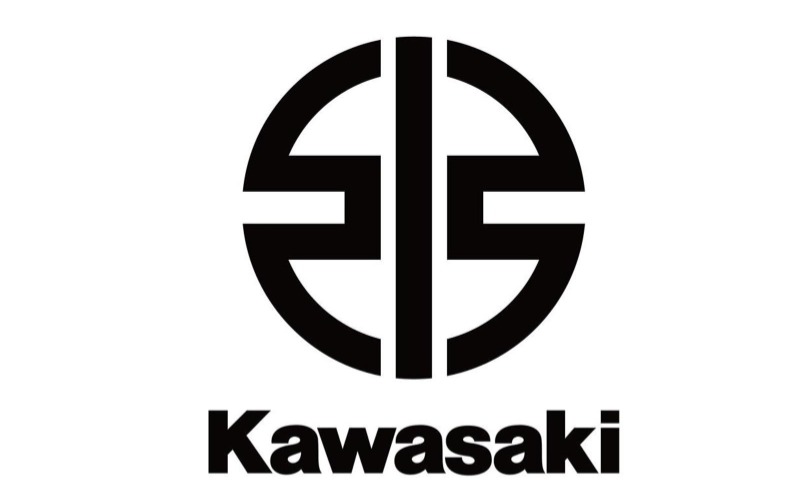
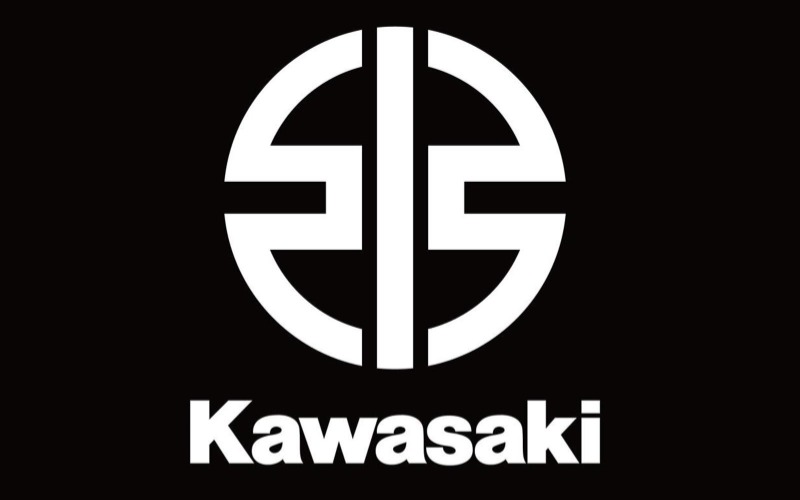
A company with over 120 years of heritage, Kawasaki Heavy Industries (KHI), encompasses manufacturing enterprises focusing on sea, land, air and even into deep space. Following the announcement of the creation of a new company within the Kawasaki group created to solely focus on the manufacture of motorcycles and stand-alone engines, Kawasaki Motors Ltd is now rolling out a new corporate identity which reflects both the heritage aspect of this global enterprise and to symbolise optimism of the future.
The River Mark – which is a stylised representation of the Japanese character meaning River – first appeared in the 1870’s at which time it was seen on the flags of ships owned by the Kawasaki Tsukiji Shipyard, the forerunner to Kawasaki Heavy Industries. Being formed by Shozo Kawasaki in 1878, the company first concentrated on ship building fulfilling the desire for Japan to export goods, and for the island nation to take its place on the international trading arena. With a solid reputation for marine innovation and construction quality, the ambitious company soon expanded into civil engineering, rolling stock and steam engine manufacture finally breaking the bounds of earth by creating its first aircraft.
At key points during the century plus evolution of this vast company with its global reach and reputation, the River Mark has been used, its application being restricted to Kawasaki’s most significant products of their time. In the modern era, the River Mark once more came to prominence as it appeared boldly on the cowlings of the unique to Kawasaki, Ninja H2 and Ninja H2R machines powered by their in-house designed and manufactured supercharged engines unveiled in 2015.Now, on 6 October 2021, Kawasaki has declared that the time is right to adopt the famous River Mark as its Corporate Identity symbol and for this simple yet effective round logo to be the main identifying symbol for the combined efforts of its many companies and their diverse products in both commercial and public consumer environments.
Commenting on the roll out of the new logo, Mr Masaya Tsuruno, Managing Director of Kawasaki Motors Europe said:
“The world has changed immeasurably in the century plus history of the Kawasaki company – none more so that in the past few years. As we roll out our new corporate identity with the River Mark at its core, we look to take a next, bold step in terms of technology and engineering as well as enhancing the lives of countless people around the world with a focus on sustainability and emerging green technologies. While some things change others remain constant such as our commitment to be the best in our chosen fields; the River Mark is a fitting symbol of this commitment.”
Kawasaki’s any roads Versys 1000 has successfully established a place for itself in the hearts of numerous riders in the past few years, and that success story looks set to continue in 2022 as Adventure Calls once more.
Appealing to truly ambitious riders who want to explore beyond the comfort and endurance limits of most machines, the Versys will be available in three versions for 2022. The SE model is the leader of the family featuring an enviable specification that includes a wide range of electronic rider aids and technical features as well as offering electronically damped front and rear suspension as standard. Featuring Showa’s advanced Skyhook suspension technology, the attitude of the SE is focussed on the machine staying in the same relative position as the road surface undulates with the suspension action absorbing the movement via constant adjustment thanks to its super-fast reaction speed.
As range partner, the SE is complemented by an S model that continues into 2022 offering the same rider aids as the SE yet relying on a more traditional non-electronically damped suspension set up. The list of rider aids that both machines feature is extensive including electronic cruise control, an IMU enhanced control package, traction control, power mode selection, integrated riding modes, an up/down quick shifter and an integrated ABS braking system.
From a chassis point of view, the S and SE also have full LED lighting including cornering lights, TFT meter panels with Bluetooth connectivity to the riders’ smartphone via the Kawasaki Rideology App and the convenience of a large windscreen and protective hand guards. Available with colour coded clean mount panniers plus a top case as accessory items, both the S and SE models will be available in a variety of Editions in 2022 ranging from Tourer to Grand Tourer.
Finally, completing the trio of Versys 1000 models available for the new season is a standard or “entry-level” version giving riders on a more limited budget an opportunity to discover why so many thousands of owners have such an affinity with the Versys concept.
Offering the same base specification as both S and SE models in terms of the engine and chassis, but without such items as cornering lights, TFT meter panel, integrated riding modes and highly durable paint of its siblings (or the SE electronically damped suspension), the standard machine does however offer the accessory option to add an up/down quick shifter, large windscreen, heated grips and hand guards plus the accessory pannier and top case luggage options common to the other machines in the 2022 Versys 1000 range. Standard, S and SE, for 2022 there truly is a Versys 1000 for every budget and every rider.
Available from the end of January 2022, the colours and prices for all three editions will be:

Versys
- Candy Lime Green/Metallic Spark Black (Standard £10,399, Tourer £11,199, Grand Tourer £12,099)
Versys S
- Emerald Blazed Green/Metallic Diablo Black/Metallic Spark Black (Standard £13,099, Tourer £13,899, Grand Tourer £14,999)
- Metallic Graphite Gray/Metallic Diablo Black/Metallic Flat Spark Black (Standard £13,099, Tourer £13,899, Grand Tourer £14,999)
Versys SE
- Emerald Blazed Green/Metallic Diablo Black/Metallic Spark Black (Standard £14,999, Tourer £15,799, Grand Tourer £16,699)
- Metallic Graphite Gray/Metallic Diablo Black/Metallic Flat Spark Black (Standard £14,999, Tourer £15,799, Grand Tourer £16,699)
Lorem Ipsum
Kawasaki will start a Retrovolution in 2022 with the introduction of the new Z650RS. Augmenting its already hugely popular retro sport line, the Z650RS will open the mid-capacity class to a wide range of riders. Recognised as being at the forefront of the rapidly expanding retro sport scene, Kawasaki has the unique advantage of close to fifty years of Z heritage and this has been brought to bear on the design of the new 2022 machine.
Targeted at younger riders and those in the early stages of their riding career, the Z650RS is predicted to also appeal to those who fondly recall the launch of the iconic “son of Z1” Z650-B1 in 1977. The delicate balance of old and new, retro and current has been expertly achieved by the Kawasaki design team with clever Z references abounding.
At the heart of the new machine is an updated version of Kawasaki’s venerable 649 cm3 water-cooled, parallel twin engine used in both the current Z650 and Ninja 650 models. With a justifiable reputation for durability and performance, the assist and slipper clutch equipped engine unit has also formed the basis of machines raced to success at the gruelling Isle of Man TT races. Tuned in the case of the Z650RS for low and mid rev response, plus characteristic invigorating high rev performance, the engine is rated at 68 PS (50.2 kW) and will also be available from Kawasaki dealers with a 35kw power down kit fitted creating an A2 compliant machine.
In terms of the chassis, the frame is a tubular trellis type construction providing both lightness and agile response to aid reassuring handling capabilities. Its narrow aspect also allows riders to easily reach the ground at a standstill and manoeuvre the bike on the move with equal ease. The seat height for European models will be 820mm with a low seat accessory option at 800mm.
Focusing on suspension, the front duties are undertaken by ø41mm conventional forks with Kawasaki’s highly rated horizontal link rear suspension acting on a shock that is adjustable for pre-load. Braking is care of dual twin piston front calipers acting on retro-style 300mm round disc rotors instead of Kawasaki’s customary petal style rotors while at the rear a single piston brake acts on a 200mm rotor all assisted by Bosch advanced ABS.
Specification is one thing but the styling of the Z650RS is whole new ball game. Evoking myriad memories of the Z650-B1, the paint and pinstripes are a faithful reproduction of the green version of the earlier machine while the iconic “duck tail” cowling behind the seat and faithfully crafted side panels also play homage to the 1977 machine. Even the seat and its stitching pattern reveal a familiar fastidious attention to detail attention by Kawasaki stylists.
A round, LED headlamp lights the way while the dual analogue style “artillery shell” shaped meters include a digital centre panel for rider information. The adoption of gold multi-spoke type wheels is truly the “icing on the cake” while further embellishment is possible via a range of Kawasaki Genuine Accessories. Without doubt the new Z650RS will ensure that 2022 is the year of “Retrovolution”.
2022 Z650RS – Three Colours & Three Distinct Styles
* Metallic Spark Black – £7,549
* Candy Emerald Green – £7,699
* Metallic Moondust Gray / Ebony – £7,699
AVAILABLE FROM NOVEMBER 2021
With few, if any, rivals, the Kawasaki sport touring Ninja 1000SX has been one of the stand-out machines of recent years. Carving itself an enviable niche as a machine that has supersport handling and DNA combined with the comfort and flexibility to tour solo or with passenger, the Ninja 1000SX has won the highest praise winning countless magazine and web site road tests.
Now in its fourth iteration, the Ninja 1000SX has been gradually refined and features a magical mix of features that combine to create a machine with real pedigree. The recent adoption of a sporting four into one exhaust and more angular cowling combine with radial mount mono-bloc front brake calipers, a radial mount master cylinder and horizontal back-link suspension plus up/down quick shifter to display authentic Ninja credentials.
And from a touring perspective, clever touches abound. In terms of luggage capacity, the combined total capacity of the accessory panniers is an impressive 56l plus a clean mount pannier system means that the supersport style of the machine is not marred by an ugly framework when the panniers are removed. Seat comfort has also recently been upgraded along with greater wind protection from a screen offering a wide range of adjustment to fine tune the ride.
In terms of electronic rider aids, the assistance is myriad thanks to the adoption of an IMU that, along with the ECU, measures inertia in six axis plus electronic cruise control as standard. Alongside this, selectable integrated riding modes and a cornering management function are standard as well as power mode selection, KTRC traction control, supersport level ABS and smartphone connectivity between the all-digital TFT colour meter and the riders’ smartphone via Kawasaki’s Rideology App.
Default choice for a legion of riders who want their machine to multi-task and excel at whatever it is asked to do, the 2022 Ninja 1000SX will deliver a truly unique combination of competencies.
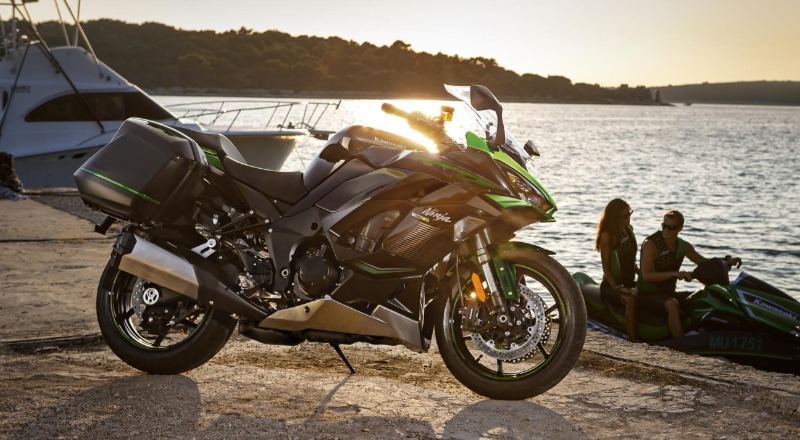
Colours for 2022 will be:
- Metallic Diablo Black/Pearl Robotic White
- Emerald Blazed Green/ Metallic Diablo Black/Metallic Graphite Grey
- Metallic Matte Graphenesteel Grey/Steel Grey/ Metallic Diablo Black
Re-energising one of Kawasaki’s most lusted after paint schemes from the 1970’s, the new Z900RS SE model for the 2022 season will be available in the classic “Yellow Ball” livery of the original 1972 Super Four, model Z1.
Although the most obvious sign of this new variation on the stunningly popular Z900RS theme, the modifications do not stop there. Again, reminiscent of the type of tuning performed by enthusiasts back in the day, the Z900RS SE comes equipped as standard with an impressive array of other quality specification upgrades including changes to suspension and braking components.
An easy spot at the rear of the machine, the SE model features an Öhlins S46 rear shock with preload adjuster. Featuring an aluminium body with single-tube construction, the large ø46 mm piston plus internal oil and gas chambers separated by a floating piston result in a superior sense of grip and handling.
And up-front changes have also taken place with the 41mm inverted front fork not only resplendent with gold-coloured outer tubes but with standard settings refined to create an ideal balance of front/rear poise and reaction across the whole range of suspension travel.
Braking too has seen a change with the adoption of a Brembo caliper and rotor package for the front end. The twin ø300 mm Brembo front discs are gripped by Brembo M4.32 radial-mount monobloc calipers served by a smaller-diameter Nissin radial-pump master cylinder (down to ø17.5 mm from the ø19.1 mm on the standard model) activating braking action through stainless-steel braided lines delivering greater stopping power while offering linear progression when operating the lever.
Cosmetically, the Z900RS SE, which features the “RS” letters of the model logo on the side covers finished in red, is differentiated even further via black alumite radiator side covers and FI cover plus gold coloured multi spoke wheels. The “icing on the cake” of course is the so-called “Yellow Ball” paint scheme pulling on the heart strings of dedicated Z1 fans plus legions of new riders attracted to the ever-growing retro sport scene willingly immersing themselves in Kawasaki’s decades of unique Z heritage.
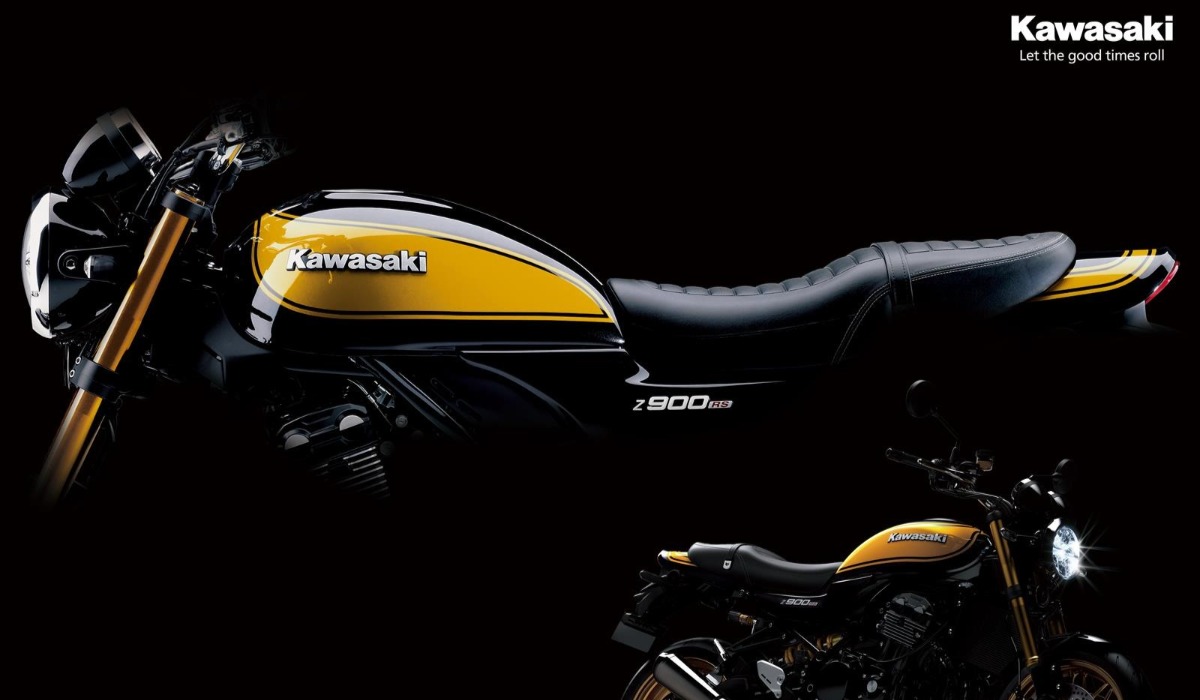
The legendary Ulster Grand Prix might have been postponed again for 2021, but the iconic Dundrod circuit just outside of Belfast in Northern Ireland has been the scene of success for many Kawasaki riders over the years.
First held in 1922 on the older 20.5. mile Old Clady Circuit, the current 7.401 Dundrod course was introduced in 1953. Since then, it has established itself as the world’s fastest road race, with the current record an incredible 136.415mph average lap!
With such an illustrious history, the event has seen lots of success for Kawasaki-powered riders. In recent years, Dean Harrison has taken his Ninja ZX-10R to the top step in the Superbike class while the likes of Christian Elkin, Dan Cooper, Derek McGee and Ivan Lintin have all taken honours in the Supertwin category.
Prior to that, victories across the Superbike, Supersport and Superstock races came at the hands of Ryan Farquhar, Connor Cummins, Michael Dunlop and Ian Hutchinson. A number of these wins came from the McAdoo team, and with no race for 2021, we thought we would catch up with McAdoo Kawasaki Team Manager Jason McAdoo
“The McAdoo team has a long history with the Ulster Grand Prix, first racing there in 1983 – our first year as a team – with Paul Cranston.
It’s a special circuit – so fast and flowing but with all the hallmarks of a real road race. The event was originally Northern Ireland’s world championship round and always had that special feel about it. The legendary Joey Dunlop won his five F1 world titles with the Ulster GP as one of the rounds, as did Brian Reid in his F2 championships years, who later raced for the McAdoo team in 1993 and 1994.
We’ve competed there with many riders over the years and got our first podium with Alan Irwin. Our first wins at the Ulster GP came with Bob Jackson in 1997 and it was a special feeling to say the least. Bob was fantastic around Dundrod winning many races on the circuit – another highlight was pushing Philip McCallen all the way on our ZX-7RR Kawasaki in the 1997?Superbike race before an exhaust problem saw him settle for second.
We went on to have success at the circuit with Ryan Farquhar but perhaps the most exciting days came in 2006 when Ian Hutchinson was riding the McAdoo Kawasaki bikes.
‘Hutchy’ rode superbly all week and smashed the 600cc lap record at 125.433mph on the McAdoo Kawasaki Ninja ZX-6R. This achievement was eclipsed though when he went on to set a new outright world record lap of 130.828mph on the McAdoo Ninja ZX-10R – a speed which labelled Dundrod as the fastest circuit in the world.
This record had been broken before we returned to the Ulster in 2009, this time with Manxman Conor Cummins riding for the team. Conor was flying and with TT podiums that year was confident of more success at?Dundrod. His confidence was well-founded when Conrod again gave the team a new world record lap of 133.28mph, going on to win two Superbike races on the ZX-10R. It was a brilliant event for us, especially as Kawasaki were celebrating 25 years of the ‘Ninja’ brand and leaving there again as world record holders was a fitting celebration.
The circuit lends itself to fantastic racing with so much slipstreaming and high speed corners. We’ve been involved in some fabulous races there including Michael Dunlop and more recently the late James Cowton who scored another podium for us on the Kawasaki 650 Supertwin in 2016.
Adam McLean won the Supertwin race at Dundrod in 2018 and, hopefully, we can have more success there in the future. The event has so much history and support always attracting huge crowds – we can’t wait to get back there in 2022.”
We can’t wait for the 2022 Road Racing season to get underway and we can’t wait to return to the Ulster Grand Prix to see how our Team Green riders and teams get on!

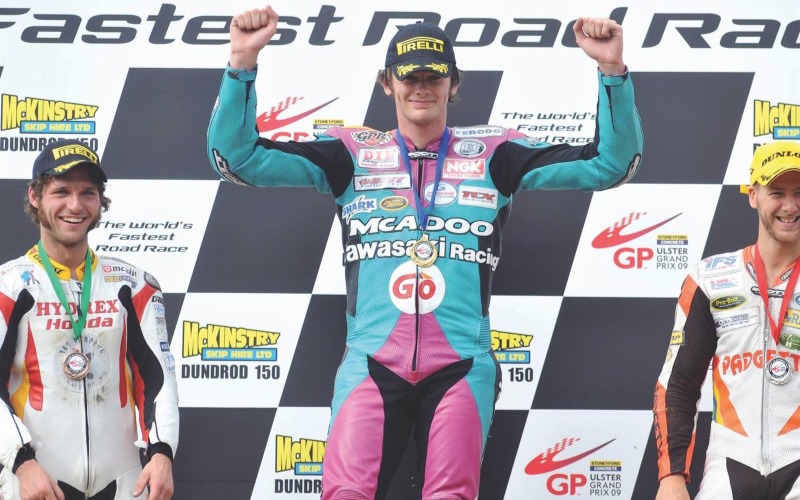
Kawasaki Motors UK is pleased to announce that it is returning to Motorcycle Live on December 4th – 12th 2021. After the cancellation of the physical show in 2020, this year will mark the return of fans to the NEC Centre and Kawasaki will be showcasing the full range of 2022 models alongside a host of features and activities.
For 2021, Kawasaki will be located in Hall 2, and will have the full suite of soon-to-be-announced 2022 models for fans to get up close and personal with. The Kawasaki UK staff will also be on hand throughout the nine day event to help visitors understand the latest innovations and discuss the many features and benefits of the new model range.
In addition to the latest models, Kawasaki will also have a host of British Superbike riders in attendance on the stand over the event, holding interviews and meeting fans for autographs. Having turned green for 2021, the California Superbike School will also be featuring on the stand, giving visitors the chance to book their place for the 2022 season.
For those visitors looking to get on two wheels for the first time, there will be a dedicated Kawasaki Rider Training Services area as well as a fleet of Z125s in the MCIA Try Ride Zone. The Kawasaki shop will have the latest official clothing and merchandise on sale, while Club Kawasaki members will be able to take advantage of their discount and again be able to access the exclusive member’s area for a break from the hustle and bustle of the show!
Tickets for the 2021 show will be available soon from www.motorcyclelive.co.uk.
Re-energising one of Kawasaki’s most lusted after paint schemes from the 1970’s, the new Z900RS SE model for the 2022 season will be available in the classic “Yellow Ball” livery of the original 1972 Super Four, model Z1.
Although the most obvious sign of this new variation on the stunningly popular Z900RS theme, the modifications do not stop there. Again, reminiscent of the type of tuning performed by enthusiasts back in the day, the Z900RS SE comes equipped as standard with an impressive array of other quality specification upgrades including changes to suspension and braking components.
An easy spot at the rear of the machine, the SE model features an Öhlins S46 rear shock with preload adjuster. Featuring an aluminium body with single-tube construction, the large ø46 mm piston plus internal oil and gas chambers separated by a floating piston result in a superior sense of grip and handling.
And up-front changes have also taken place with the 41mm inverted front fork not only resplendent with gold-coloured outer tubes but with standard settings refined to create an ideal balance of front/rear poise and reaction across the whole range of suspension travel.
Braking too has seen a change with the adoption of a Brembo caliper and rotor package for the front end. The twin ø300 mm Brembo front discs are gripped by Brembo M4.32 radial-mount monobloc calipers served by a smaller-diameter Nissin radial-pump master cylinder (down to ø17.5 mm from the ø19.1 mm on the standard model) activating braking action through stainless-steel braided lines delivering greater stopping power while offering linear progression when operating the lever.
Cosmetically, the Z900RS SE, which features the “RS” letters of the model logo on the side covers finished in red, is differentiated even further via black alumite radiator side covers and FI cover plus gold coloured multi spoke wheels. The “icing on the cake” of course is the so-called “Yellow Ball” paint scheme pulling on the heart strings of dedicated Z1 fans plus legions of new riders attracted to the ever-growing retro sport scene willingly immersing themselves in Kawasaki’s decades of unique Z heritage.


Standard unleaded fuel contains up to 5% ethanol and can be used in any petrol-engine vehicle without problems or the need for modification.
In a bid to cut carbon dioxide (CO2) emissions, the Department of Transport (DfT) has confirmed that E10 petrol is being introduced to UK forecourts in September this year.
The benefits of E10
It’s estimated that the greener fuel could reduce CO2 emissions by 750,000 tonnes per year, the equivalent of taking up to 350,000 cars off the road in the UK.
Transport Secretary Grant Shapps said: “The next 15 years will be absolutely crucial for slashing emissions from our roads, as we all start to feel the benefits of the transition to a zero-emission future.
“Before electric vehicles become the norm, we want to take advantage of reduced CO2 emissions today.
“This small switch to petrol containing bioethanol at 10% will help drivers across country reduce the environmental impact of every journey.”
The E10 blend is already used in other countries such as Belgium, Finland, France and Germany.
Robin Wright, secretary general of environmental campaign groups ePURE, said: “Displacing 10% of Europe’s petrol with ethanol through E10 fuel, a fuel widely available in France, Finland and Germany, would reduce greenhouse gas emissions from petrol vehicles by over 6%.
“But more ambition and greater use of ethanol is needed. Brazil currently mixes its petrol with up to 28% ethanol, so why not Europe?”
Finland is leading the way in Europe. E10 fuel has increased its share of petrol sold each year since it was introduced at the beginning of 2011, with the Finnish Petroleum and Biofuels Association reporting a 63% share in 2015.
How does it affect you?
As many as 600,000 vehicles on our roads in 2020 aren't compatible with E10 – you can see if your vehicle is compatible with the new fuel by visiting the official E10 online checker: https://www.gov.uk/check-vehicle-e10-petrol
Whilst the government website lists compatible models, it is currently outdated for Kawasaki motorcycles. Below is the list of older models that Kawasaki Heavy Industries (KHI) have tested and approved for use with E10 fuel.
Any earlier model year should use a non E10 fuel whilst those manufactured later are approved for E10 fuel use. The fuel details are also detailed in the owner’s manual and shown in the fuel identification label located on the fuel tank.
| Model | From Model Year |
| KLX125 | 2009 onwards |
| D-Tracker 125 | 2009 onwards |
| KLX250 | 2008 onwards |
| Ninja 250R | 2008 onwards |
| Ninja ZX-6R | 2007 onwards |
| ER-6n | 2006 onwards |
| ER-6f | 2006 onwards |
| Versys | 2007 onwards |
| Z750 | 2007 onwards |
| W800 | 2011 onwards |
| VN900 | 2006 onwards |
| Z1000 | 2009 onwards |
| Z1000SX | 2011 onwards |
| Ninja ZX-10R | 2006 onwards |
| ZZR1400 | 2006 onwards |
| 1400GTR | 2008 onwards |
| VN1700 | 2009 onwards |
| VN2000 | 2008 onwards |
Club Kawasaki and RAC have put together a unique offer that combines 12 months Club Kawasaki and 12 months Kawasaki Assist for one great price from £70.00. For full details, please visit: www.kawasakiassist.co.uk
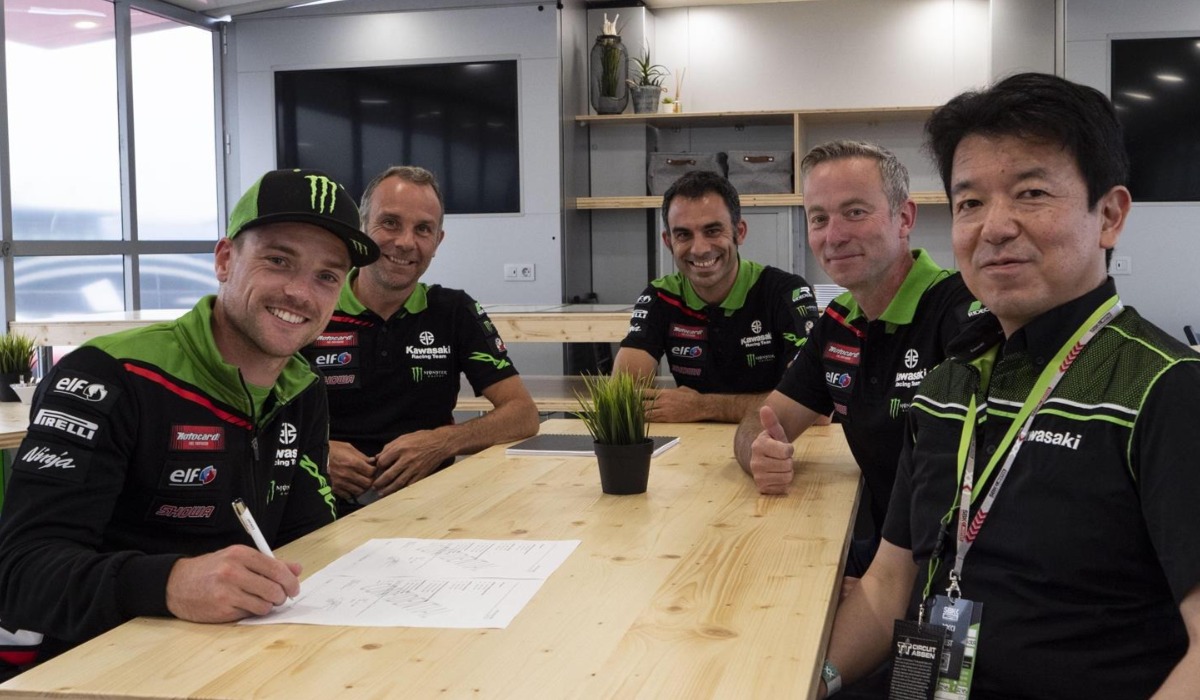
Alex Lowes will remain an integral part of the Kawasaki Racing Team for the coming seasons, having agreed a new multi-year deal that will take him into his third year as an official Kawasaki WorldSBK rider.
The contract signing was witnessed by Mr Masatoshi Yoshioka, Director of Corporate Planning Division, Kawasaki Motors Europe at the recent Assen round of the 2021 FIM WorldSBK Championship, where Alex retained his overall fourth place in the points table.
As well as returning as a full KRT Superbike rider next year Alex will also strengthen his bond with Kawasaki and his KRT squad as he and Jonathan Rea will be joined by 2021 Kawasaki superbike debutant, Lucas Mahias, to compete in the prestigious Suzuka 8 Hours race later this year.
With a race win and seven other podiums to his credit since he joined Kawasaki in 2019 Lowes continues to find a greater affinity with the new Ninja ZX-10RR, his team and his pit crew, led by Marcel Duinker.
Before the 2022 season there is the small matter of the rest of this year’s championship to go. Five rounds have been completed with a further eight to go, depending on local regulations around the global pandemic.
Alex Lowes, stated: “I am really happy to have signed once more with the Kawasaki Racing Team, the most successful team in the current era of WorldSBK.
After a strange first year in the team last year due to the global situation and with such a short season it has been good to start this year at some different tracks and I am understanding the bike a lot more. It has also been slightly frustrating this year because I feel like we started strongly but the results are not quite where we would want them to be right now. We have a lot of potential and I am still in the top four of the championship, close to the top three, which is the target for this year.
I will be working hard for the next few weeks to make that next step to be regularly challenging for the podium. Honestly, I feel like it is close, so with this team and all these guys around me – with the relationships we have been building – everything is in place now to push things forward.
I am really thankful to stay in the team next year, and proud of the faith that Kawasaki has shown in me. In our job there is a lot more that goes on behind the scenes than the results that you see on the track so I am really happy about this new deal with KRT. A massive thanks to all the guys behind the project, to Guim and Biel Roda, Steve Guttridge and all the people at KHI in Japan for believing in me again.”
KRT Manager, Guim Roda, concluded: “Alex started with KRT during the Covid pandemic. He needed to learn quickly and concentrate on making championship points in those first three months; not easy. For 2021 he started the season strongly and we are all working to make those important steps to improve the performance of the overall package.
We are so happy to have Alex and he is highly motivated to continue with the KRT project. With this two-year agreement we are convinced that we will now build on these firm foundations to create the strongest package with him, Marcel, his Crew Chief, the Ninja ZX-10RR and the entire KRT organisation.”
2021 Alex Lowes Rider Statistics:
- 2021: Races: 15, Wins 0, Podiums 4, Superpoles 0
- Career Race Wins: 2 (1 for Kawasaki)
- Career Podiums: 28 (8 for Kawasaki)
- Career Poles: 1 (0 for Kawasaki)
#NinjaSpirit #FaceYourself
Editors Note: the accompanying image was created within Covid protocols
For the second round of the EWC World Endurance Championship, the Webike SRC Kawasaki France Trickstar Team managed to run an exceptional 12 hour race on the famous Estoril circuit in Portugal. Once again, the experience of the riders and the mechanical reliability of the Kawasaki Ninja allowed them to consolidate their second place.
The good weather and the heat were evident for the whole 12 hours of race. At 10am, Jeremy Guarnoni on the #11 got away to a very good start and went straight from 8th to 5th position. He stayed there for several laps before making his first pit stop earlier than his competitors for strategic reasons. Indeed, team manager, Gilles Stafler had foreseen this scenario.
Following the excellent performance of the Ninja ZX-10RR and some crashes and unforeseen events of competitor bikes, the #11 found itself elevated to second position.
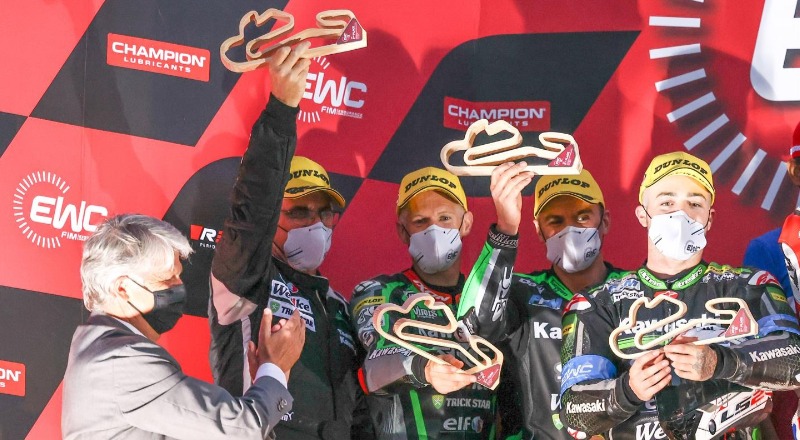
Unfortunately, after more than three hours of racing, the intervention of the safety car did not benefit the SRC Team and it lost about 10 seconds on the first placed machine
.After a number of twists and turns, the lime green bike was in first place around the halfway mark and led for most of the second half of the race until a fuel failure interrupted this domination. Erwan Nigon had to push his dry machine to get back on track with David Checa in third position.
Jeremy Guarnoni then put in a superb final stint to see the #11 finish second after a fierce battle with the #333 machine.
Again, all three riders set a very fast pace with exemplary consistency to lead an exceptional race. The Dunlop tyres excelled throughout the race despite the very high temperatures, and a track that was raised to 58 degrees at one point!
This second place on the podium allows the Webike SRC Kawasaki France Trickstar Team to take the lead in the 2021 FIM EWC World Championship.

